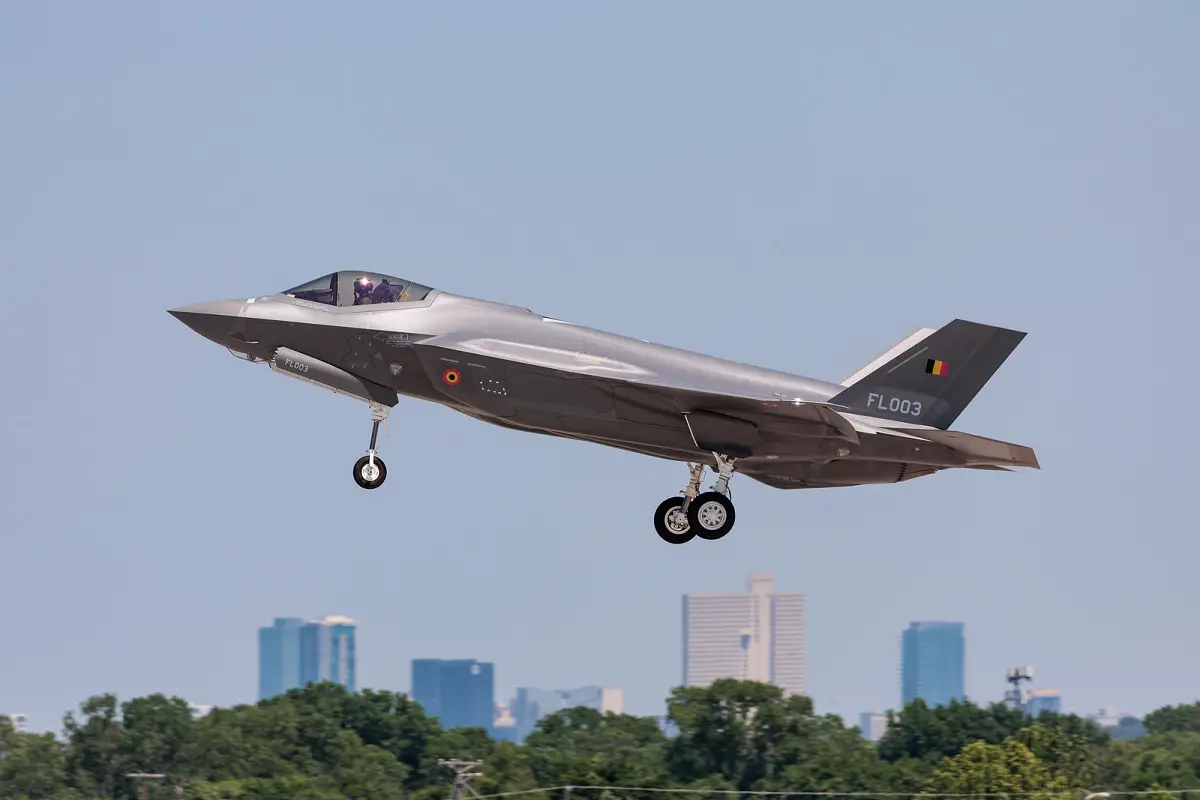The Belgian Air Force has celebrated a significant milestone with the maiden flight of its first F-35A Lightning II multi-role fighter on 14 May. This inaugural flight, marked by the aircraft designated with the military registration FL-003, took place at Lockheed Martin’s facilities in Fort Worth, Texas. This event represents a crucial step in the delivery process of the advanced fighter jet. The delivery of Belgium’s F-35A is contingent on the completion of the TR-3 modification certification, which Lockheed Martin expects to finalize by the end of the current quarter. This certification is essential for the aircraft to meet the Block 4 standard, the specification under which all Belgian F-35As will be delivered.
Belgium officially received its first F-35A Lightning II Joint Strike Fighter during a roll-out ceremony on 10 December at the Fort Worth production facility. This aircraft, designated AY-01/FL001, was presented to Belgian government and military leaders before its scheduled delivery to the international F-35 training school at Luke Air Force Base (AFB) in Arizona in early 2024. The initial components of the Belgian F-35 Conversion Unit (BEL F-35 CU) have already arrived at Luke AFB. Over the coming years, the BEL F-35 CU will train a total of 48 pilots, 14 flight simulator instructors, and 120 technicians to operate and maintain Belgium’s fleet of 34 conventional take-off and landing (CTOL) Block 4 F-35As.

Belgium had chosen Lockheed Martin’s F-35 stealth jets over the Eurofighter Typhoon to replace its ageing F-16s in a 4 billion euro ($4.55 billion) deal. After months of deliberation, the decision to buy 34 of the planes was announced at a government news conference. Belgium joins a list of other European NATO allies to take the American-made plane, which is also set to be the U.S. military’s main fighter aircraft for decades to come. The pick makes Belgium the 12th country to choose the F-35, which comes in three variants – the F-35A conventional take-off and landing model, the F-35B, a short take-off or vertical landing version, and the F-35C, used aboard aircraft carriers. The decision would further strengthen ties between the United States and Belgium and make it easier for the two countries’ air forces to work together on future missions.
The Lockheed Martin F-35 Lightning II is an American family of single-seat, single-engine, all-weather stealth multirole combat aircraft designed for air superiority and strike missions; it also has electronic warfare and intelligence, surveillance, and reconnaissance capabilities. Lockheed Martin is the prime F-35 contractor with principal partners Northrop Grumman and BAE Systems. Several other countries have also ordered, or are considering ordering, the aircraft. The program has drawn criticism for its unprecedented size, complexity, ballooning costs, and delayed deliveries. The acquisition strategy of concurrent production of the aircraft while it was still in development and testing led to expensive design changes and retrofits. The aircraft is planned to be a cornerstone of NATO and U.S.-allied air power and to operate until 2080.
Milestone achieved! The first ??F-35A took off and soared through the skies on Tuesday May 14th 2024.
Pictures © Lockheed Martin pic.twitter.com/pbnDFtzlIY— Belgian Air Force?? (@BeAirForce) May 16, 2024















